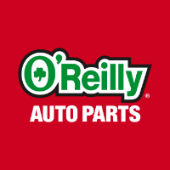-
Welcome to Auto Parts Forum
Whether you are a veteran automotive parts guru or just someone looking for some quick auto parts advice, register today and start a new topic in our forum. Registration is free and you can even sign up with social network platforms such as Facebook, X, and LinkedIn.
Check Engine Light On? Could Be A Faulty O2 Sensor
-
Similar Topics
-
By Counterman
It’s been estimated that fraudulent warranty claims cost auto parts stores $600 million every year.
Those costs stem from a number of expenses that are set in motion by a return, including manually processing credits; reverse logistics and transportation; repackaging products; and additional quality-control testing to rule out major defects in materials.
The “Check the Part” campaign estimates that more than 50% of warranty returns are either brand-new or not the manufacturer’s product – which suggests that many parts professionals aren’t even looking at the item that’s being returned.
Endorsed by MEMA Aftermarket Suppliers and the Auto Care Association, the campaign encourages parts professionals to follow a simple three-step process when processing warranty returns:
Open the box. Inspect the part. Verify the return. Recently, Dorman Products published a return guide for CV-joint kits.
If a customer wants to return a CV-joint kit, Dorman offers these three tips to help to determine if it’s a valid warranty claim:
Open the box and make sure the correct part is in the box. Some customers may try to return unrelated products and heavy objects as a scam. Dorman parts will be laser-etched with the part number as shown. OEM parts or parts from other manufacturers are not valid returns. Some joints come lubricated from the factory. Others have grease supplied. Grease must be installed in all cases. No joint can last without lubricant! Verify grease was present – the unit should be pretty messy when returned. If you see rust, blue discoloration or distorted components, it’s likely the joint had too little grease and thus is ineligible to be returned. Please share examples of ineligible returns on link hidden, please login to view. You can download a PDF of the return guide below:
link hidden, please login to view link hidden, please login to view The post
link hidden, please login to view appeared first on link hidden, please login to view.
link hidden, please login to view -
By NAPA
You might know how to check the fuel level, but do you know how to check fuel pressure? There’s a handy gauge on the dashboard that tells you how much fuel is in the gas tank, but if that fuel isn’t reaching the engine under enough pressure, a mechanical failure could be brewing. Let’s take a look at the process necessary to check fuel pressure.
What Does Low Fuel Pressure Mean? link hidden, please login to view
If fuel can’t reach the injector with enough force to atomize the fuel, then the engine won’t run right. More often than not low fuel pressure means a
link hidden, please login to view. A bad fuel pump might limp along for a little while, but eventually it won’t build enough pressure to feed the engine. How To Check Fuel Pressure Using A Fuel Pressure Gauge
To check fuel pressure, you will need a
link hidden, please login to view (also called a fuel system pressure tester). Make sure you are working in a well-ventilated area, as some fuel fumes may escape during the procedure. Turn off the engine. Open the hood. Locate the fuel rail. You may need to remove the engine cover for access. Locate the Schrader valve on the fuel rail. This is where the fuel pressure will be tested. Remove the cap from the fuel rail Schrader valve. Attach the fuel pressure tester, making sure the connection is tight. If the fuel pressure tester has a pressure relief hose, route it to a proper container to capture the released fuel. A link hidden, please login to view makes a perfect catch container, and the fuel can then be used later. Turn the ignition switch to “on,” but do not start the engine. The fuel pump will pressurize the fuel system, and you will be able to read the fuel pressure gauge. To test the fuel pressure with the engine running, leave the fuel pressure gauge attached, but place it where it will not contact any of the rotating engine accessories (fan, fan belt, pulleys, etc), and ensure the gauge will not fall due to engine vibration. You may wish to have an assistant hold the fuel pressure gauge.
Start the engine, and observe the fuel pressure gauge. Refer to a link hidden, please login to view for fuel pressure specifications. Once you have taken the fuel pressure reading, shut off the engine. With the pressure relief hose secured to a container, release the fuel pressure from the gauge. Properly dispose of the released fuel or reuse it. Disconnect the fuel pressure gauge from the Schrader valve on the fuel rail. Wipe up any fuel that has spilled, and dry the spill area thoroughly. Place the cap back on the Schrader valve. Replace the engine cover, if it was removed. Close the hood. How To Check Fuel Pressure Using A Diagnostic Tool
Wondering how to check fuel pressure without gauge access? Checking fuel pressure using an OBD diagnostic tool can perform this vehicle test. The exact procedure will vary based on the manufacturer. Refer to the user manual for instructions on how to view live data using the OBD tool.
In the case of the
link hidden, please login to view, start at the Diagnostic Menu and select the “View Data” option. The tool will scan for available parameter identifications (PID) that can be read. Once the tool has read all the PIDs, it will prompt the user to “Select Data to View.” Choose “Entire Data List” for a readout of all the discovered PIDs. In that list should be a line called “FUEL PRES” or a similar term. That diagnostic reading is the current fuel pressure. For those who are more tech savvy, there are smartphone apps that can connect directly to a third-party
link hidden, please login to view. These apps display the real-time information flowing through the onboard diagnostic system. Information like engine temperature, transmission fluid temperature, fuel pressure and oil pressure are commonly available, but will depend on the app. Monitoring Fuel Pressure
If you are the kind of driver who prefers to keep a constant eye on what’s going on under the hood, consider installing a
link hidden, please login to view. There are a wide variety of gauge styles to match your interior, while also delivering needed information. You can keep an eye on fuel pressure, oil pressure, oil temperature and more with an link hidden, please login to view. If you have a performance vehicle or work vehicle, keeping an eye on engine vitals can help stop a problem before it starts. You can use a mechanical gauge attached directly to the fuel system under the hood, or a digital gauge in the cabin that uses a sending unit.
Frequently Asked Questions:
What Are The Symptoms Of Low Fuel Pressure?
Common low fuel pressure symptoms:
Vehicle will not start or keeps stalling Long engine cranking time Hesitation when accelerating Engine is low on power Check engine light is one (engine lean, misfire OBD-II codes stored) What Are Symptoms Of A Bad Fuel Pressure Regulator?
If the fuel pressure readings are erratic or not within the specification, those may be symptoms of a bad
link hidden, please login to view. What Are Symptoms Of A Bad Fuel Pressure Sensor?
If the fuel pressure sensor has gone bad, you may have an illuminated check engine light, trouble getting the engine to start due to low fuel pressure, or reduced engine power.
If your engine isn’t running right or the check engine light is on, then a fuel pressure check can be a good starting point for diagnosis. As you can see, the process is pretty straightforward with the right diagnostic tool. Your
link hidden, please login to view and NAPAonline carry a wide variety of link hidden, please login to view to fit your needs. Don’t feel like leaving the house or don’t have the time? Order on NAPAonline to get
link hidden, please login to view on 160,000+ products. However you choose to shop, make sure to take advantage of link hidden, please login to view to receive 1 Point for every dollar you spend. When you earn 100 Points, you automatically get $5 off your next purchase! Don’t feel like testing fuel pressure yourself or just don’t have time? You can also swing by your local
link hidden, please login to view for a fuel pressure check. Their ASE Certified technicians have the right tools and training to diagnose any fuel related issues that your car, truck or SUV experience. Photo courtesy of
link hidden, please login to view. The post
link hidden, please login to view appeared first on link hidden, please login to view.
link hidden, please login to view 
-
By Counterman
It seems like everything old is new again. TV and movie producers love to “reboot” our favorite classics, musicians regularly cover or sample from songs we all know (and sometimes loved). Fashions from high school that make us cringe will be back in style sooner or later.
It can serve to bring us together by introducing younger generations to the things their parents knew and loved, or drive a wedge between us as we argue over which version is better. For the record, I’m the grumpy old guy who argues that the original is always better … but I don’t think I ever expected to see another Mazda with a rotary engine.
The Wankel rotary engine was a unique (if somewhat flawed) design that had last appeared in the 2012 Mazda RX8. Designed by German engineer Felix Wankel in the 1950s, various displacements of the two-rotor engine appeared in Mazda production vehicles beginning in 1967. In addition to the more familiar RX7 and RX8 sports cars, Mazda also produced roughly 15,000 rotary-powered B-series pickups from 1974-1977, and even put its tiny 1.3-liter rotary into a small bus in 1974. A prototype four-rotor engine powered Mazda to a win at LeMans in 1991.
The rotary design is unique in that it only has three moving parts. An eccentric shaft and a pair of three-sided rotors move inside a pair of roughly oval chambers, completing the traditional Otto-cycle of intake, compression, combustion and exhaust without the use of reciprocating pistons or a valvetrain. Instead, the twin rotors spin around the eccentric shaft like a hula-hoop. The secret to the Wankel design is the geometric shape of the rotor, known as a Reuleaux triangle. The fattened triangular shape of the rotor has a constant width, always sealing the chamber in three places throughout the cycle … in theory.
Sealing was an issue for the early Mazda rotary engines, with the apex seals at the three points of the triangle tending to fail. Like a piston ring in a reciprocating engine, the apex seal is responsible for maintaining compression throughout the cycle. This problem dogged the brand for years, but another inherent issue is in the housing design itself.
With the intake and compression strokes occurring at the top of the oval chamber, and the combustion and exhaust events at the bottom, the housing experiences uneven heat buildup. This leads to one of the more confusing cataloging elements of the rotary Mazdas: “leading” and “trailing” spark plugs.
Due to the heat differential between the upper and lower portions of the housing, the stock spark plugs are of different heat ranges. The leading plug (the “lower” position) is a hotter plug than the trailing (“top” position), although some enthusiasts prefer to run trailing plugs in all four positions. (Each rotor/chamber houses a pair of plugs.)
Inability to meet increasingly strict fuel-efficiency and emissions requirements ultimately killed the original rotary engine, but in 2023, Mazda resurrected the design. A single-rotor 830cc Wankel engine can now be found in the Euro-spec MX-30 e-Skyactiv R-EV plug-in hybrid. Unfortunately for RX enthusiasts, the engine serves only as a range extender for the PHEV variant of the MX-30, powering a generator rather than powering the drivetrain directly.
With improved compression, gasoline direct injection and an EGR system, this engine is much cleaner and efficient than previous rotaries. We’ll see if this improved technology can make its way back into the U.S. market, but for now, the European-engineered Wankel rotary engine has returned to its roots, thanks to the Mazda engineers who have believed in this funky little powerplant for nearly 60 years.
The post
link hidden, please login to view appeared first on link hidden, please login to view.
link hidden, please login to view





Recommended Posts
Join the conversation
You can post now and register later. If you have an account, sign in now to post with your account.
Note: Your post will require moderator approval before it will be visible.